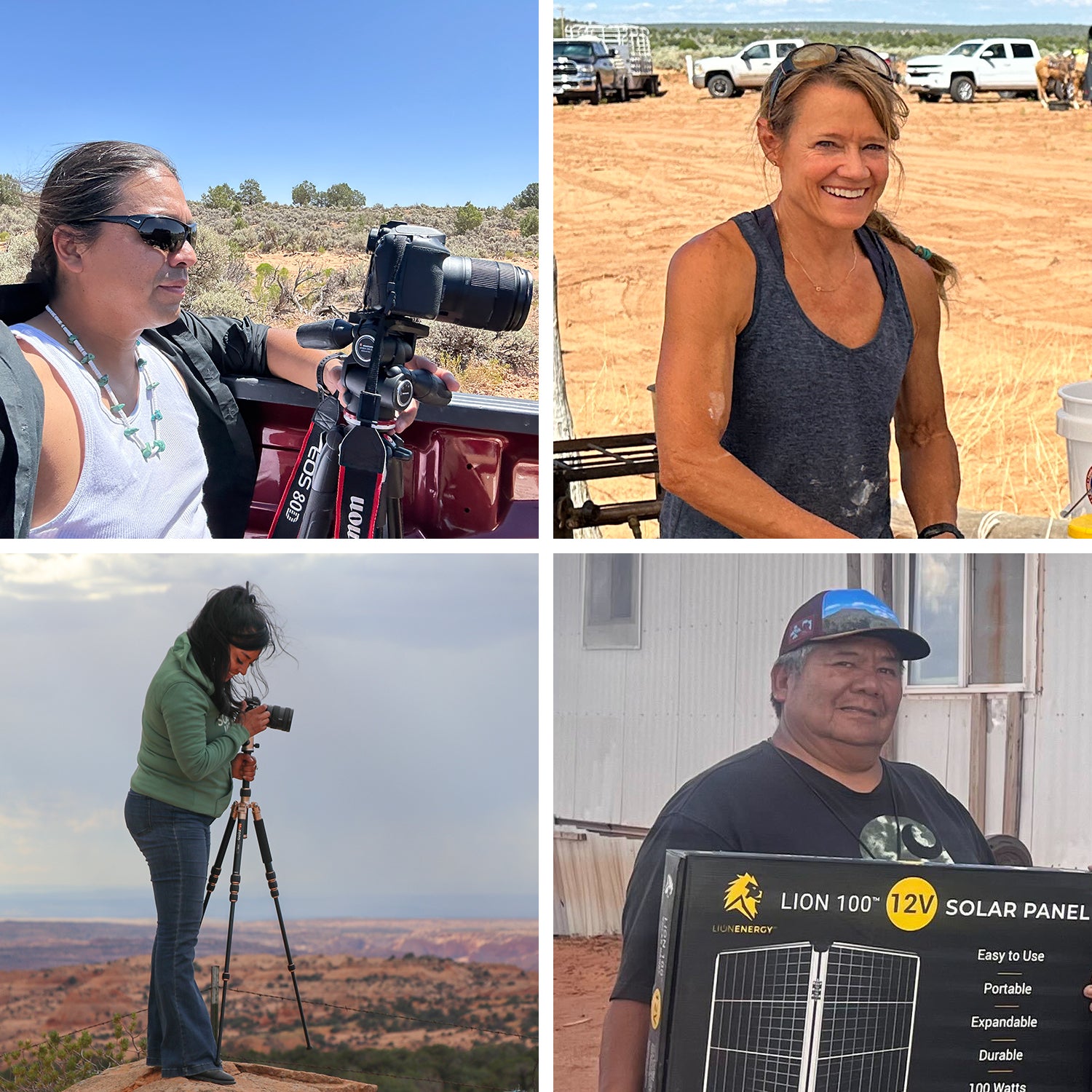For decades, American alpinist Kitty Calhoun made a name topping out on some of the world’s highest peaks, including the West Pillar of 27,766-foot Makalu in the Himalayas. But what stayed with her more than any summit view were the alarming effects of climate change.
At such elevations, she often noticed melting ice, a hindrance to her ascents. But in the high deserts of Utah, the repercussions were causing real daily struggles for those living on the Navajo Nation, something she became aware of while mentoring an Indigenous climber who’d grown up there.
For over a century, natural resources like oil, coal, and uranium extracted from Navajo land have powered the American West, yet approximately one-third of the Navajo Nation, roughly 13,500 families, live without power. That indignity on its own is hard to fathom, but climate change has also exacerbated the aridity and seasonal heat in this region, forcing families to endure more triple-digit days without respite.
With that in mind, last year Calhoun persuaded Utah-based Lion Energy to donate 35 solar-powered kits—lunch-box-size generators that can be charged in as little as four hours—and raised $32,500 to buy an additional 65 for families in one of the reservation’s most disadvantaged areas, remote Navajo Mountain. Equipped with 100-watt solar panels, a single kit can run a mini fridge for 16 hours, charge a laptop 11 times over, and last up to 20 years.
Calhoun then reached out to Norman Lameman, the Native founder of , a nonprofit devoted to preserving tribal values, to lead the distribution efforts. “I didn’t want to force kits on people,” Calhoun says. “If they were interested, Norman could explain how the technology worked in their language.”
Angelo Baca, a Navajo-Hopi distance runner and filmmaker, and Sahar Khadjenoury, a Navajo-Persian producer and director, documented the project using a grant Calhoun received from Protect Our Winters for a film called Navajo Solar Sunrise.
“It’s important for us to take care of people. From an Indigenous perspective, the people are part of the land,” Baca said. “It’s important to step away from extractive resources—our people are still dealing with the effects of uranium contamination on the reservation. And solar isn’t the end-all solution, but it’s an important first step.”
In October of 2023, the trio traveled with Lameman to oversee installation and document the myriad ways the kits can improve lives. Families were able to run fans when temperatures soared and refrigerate food, medication, and breast milk. They could rely on electric blankets and small space heaters to keep them warm in winter, and access the internet to apply for jobs, government programs, and educational opportunities. They could charge their phones. Before the kits, Calhoun says, many residents relied on car batteries to power such necessities.
“Living simply should not mean living in poverty,” she says.
To donate for more solar generators in the Four Corners region, .��


